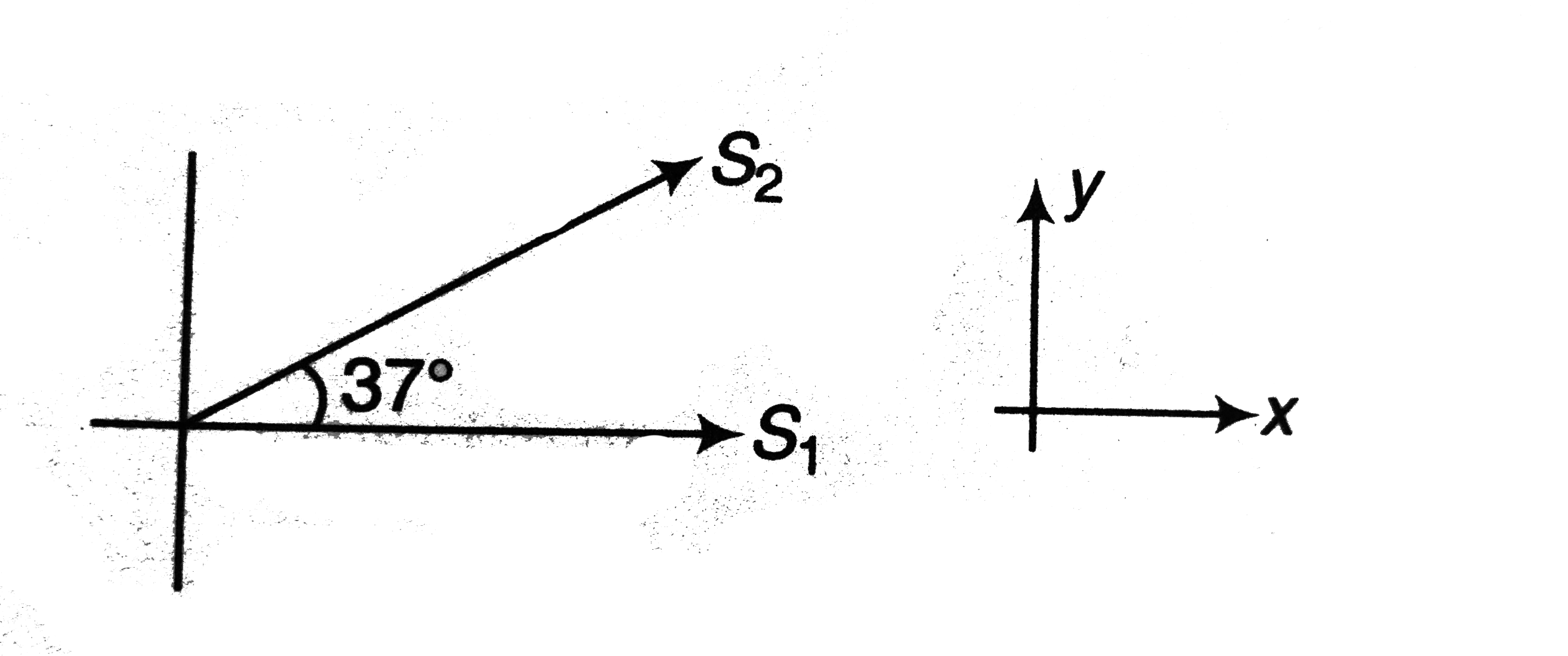Two SHMs s1=asinωt and s2=bsinωt are superimposed on a particle. The s1 and s2 are along the direction which makes 37∘ to each other
A
the particle will perform SHM
B
the path of particle is straight line
C
Both (a) and (b) are correct
D
Both (a) and (b) are wrong
Video Solution
Text Solution
The correct Answer is:C
X=S1+S2cos37∘
=(asinωt+0.8bsinωt) ...(i)
y=S2sin37∘
=0.6bsinωt
sinωt=y0.6b
Substituting this value in Eq. (i), we have
x=(a+0.8b0.6b)y
this is equation of a straight line passing through origin.
 .
.
|
Topper's Solved these Questions
- SIMPLE HARMONIC MOTIONBOOK - DC PANDEYCHAPTER - SIMPLE HARMONIC MOTIONEXERCISE - Level 1 Subjective
39 Videos
- SIMPLE HARMONIC MOTIONBOOK - DC PANDEYCHAPTER - SIMPLE HARMONIC MOTIONEXERCISE - Level 2 Single Correct
28 Videos
- SIMPLE HARMONIC MOTIONBOOK - DC PANDEYCHAPTER - SIMPLE HARMONIC MOTIONEXERCISE - Level 1 Assertion And Reason
10 Videos
- SEMICONDUCTORS AND ELECTRONIC DEVICESBOOK - DC PANDEYCHAPTER - SEMICONDUCTORS AND ELECTRONIC DEVICESEXERCISE - More than One Option is Correct
3 Videos
- SOLVD PAPERS 2017 NEET, AIIMS & JIPMERBOOK - DC PANDEYCHAPTER - SOLVD PAPERS 2017 NEET, AIIMS & JIPMEREXERCISE - Solved paper 2018(JIPMER)
38 Videos
Similar Questions
Knowledge Check
When two displacement represented by y1=asin(ωt) and y2=bcos(ωt) are superimposed, the motion is
Anot a simple harmonicBsimple harmonic with amplitude abCsimple harmonic with amplitude √a2+b2Dsimple harmonic with amplitude (a2+b2)2when two displacements represented by y1=asin(ωt) and y2=bcos(ωt) are superimposed the motion is
ANot a simple harmonicBsimple harmonic with amplitudeabCsimple harmonic with amplitude√(a)2+(b)2Dsimple harmonic with amplitude(a+b)2The ratio of amplitudes of following SHM is x1=Asinωtandx2=Asinωt+Acosωt
A√2B1√2C1D2
The equations of two SH M's are
X1=4sin(ωt+π/2).X2=3sin(ωt+π)
View SolutionTwo wave are represented by equation y1=asinωt and y2=acosωt the first wave :-
View SolutionTwo waves y1=A1sin(ωt−β1),y2=A2sin(ωt−β2) Superimpose to form a resultant wave whose amplitude is
View SolutionEquations y1Asinωtandy2=A2sinωt+A2cosωtrepresent S.H.M. The ratio of the amplitudes of the two motions is
View SolutionThe motion of a particle is given by
y=asinωt+bsinωt
The motion of the particle is
View Solution
